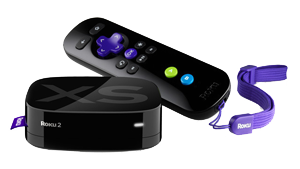Tutorial - Other NAS
Almost any device that can run a web server can stream media files to Roksbox.This would include any device which supports LAMP (Linux, Apache, MySQL, PHP).Here are the requirements for streaming media files to Roksbox.
1.You must have a NAS attached to your local network that has a web server installed and running.
2.You must be able to access the web server from other devices your local network.If there is a firewall on your web server, it must be set to allow other devices on your local network to access it.
3.If you want to stream your media files using your directory structure, your web server must either allow directory listings, must allow the use of a .htaccess file, or must be running PHP.
4.Roksbox must be configured to access your web server.
NOTE: Roku and the developers of Roksbox are not responsible for any damages that might occur as a result of using these instructions.It is your responsibility to assess the likelihood that any actions suggested here could result in voiding your warranty, or causing data loss or other damages, and that by continuing to follow these procedures you agree to take full responsibility for any damages that may occur.
If you are using a NAS listed in the Roksbox tutorial, use the instructions for that NAS. Otherwise, follow these general instructions to set up your NAS to stream media files to Roksbox.
1.Install your NAS according to the instructions that came with it. You should be able to access it from your computer, and be able to copy files to it.
2.If your NAS has a built in web server, the web server should be turned on, and you should be able to access it from a web browser on another device on your network.If your NAS doesn't have a built in web server, there is a good chance that there is a way of installing a web server on it.Search the web for solutions to installing a web server on your particular NAS.If it is Linux based, there might be a LAMP solution for it (you don't need the MySQL part, and you probably don't need the PHP part).
3.Create a directory structure below your web server root folder to hold your media files.The recommended structure is to have a media root folder directly below your web server root folder with your individual media folders below that.This would look like this:
Web Server Root
Media
Music
Photos
Videos
Alternatively, you can have your individual media folders directly below your web server root folder like this:
Web Server Root
Music
Photos
Videos
4.If you want to stream your media files using your directory structure, you must be able to view your directory structure from a web browser on another computer on your network.Open a web browser on another computer on your network, and type the ip address of your web server into the address field (ex. http://192.168.1.100).If this shows some type of welcome message, try to access a folder below your root address (ex. http://192.168.1.100/Media).If you can see a listing of your folders and files, then your web server supports directory listing, and you can skip to step 5.If you get an error message, then you need to try the following steps to be able to view your directory listing.
a.Download .htaccess and place it in the folder you tried above, then try to access your directory listing again as you did above.If you can see your files now, then skip to step 5.
b.Download rbindex.php and place it in your web server root folder.From a web browser, type the address http://your-web-server-address/rbindex.php (ex. http://192.168.1.100/rbindex.php).If you can see your directory listing, then skip to step 5.
c.If neither of these options work, then the process gets very technical.You need to either find a way to edit your web server's config file and have it allow directory listings, or have it allow the use of .htaccess files, or you need to find a way to run PHP on your web server.It is beyond the scope of this document to try to determine how to do this on your particular device, but you can search the web to try to find the solution.If you are able to find a solution, and can then get a directory listing from a web browser, then continue with these instructions.
5.Start Roksbox on your Roku, and go to Options -> My Options -> Setup Wizard -> Web Server.Give the following information when prompted on the setup wizard.
a.Media Server Address:Enter the IP address of your web server.
b.Media Root Folder:If you use a media root folder, enter the name of your media root folder (ex. Media).Folder names are case sensitive, so make sure you enter it with the proper case.If you aren't using a media root folder, remove any entry that might be here.
c.Video Folder Path:Enter your video folder name (ex. Videos).
d.Music Folder Path:Enter your music folder name (ex. Music).
e.Photos Folder Path:Enter your photos folder name (ex.Photos).
f.For all other setup options, read the screen descriptions and choose your preferences.
6.For more detailed instructions on things you can do from here, follow the Roksbox tutorial here.

